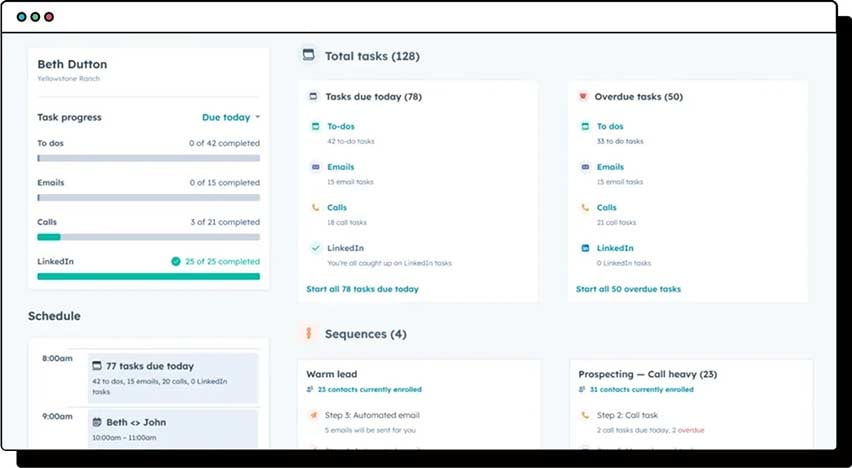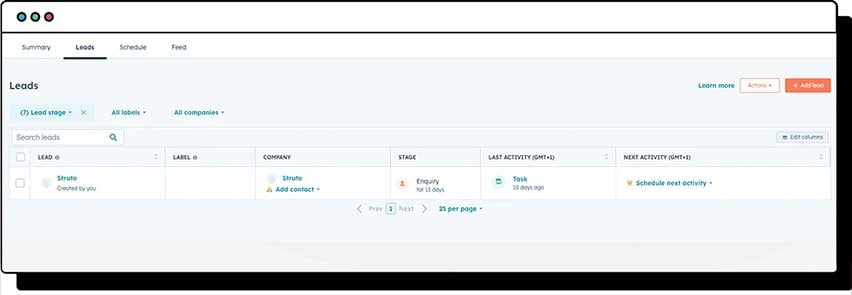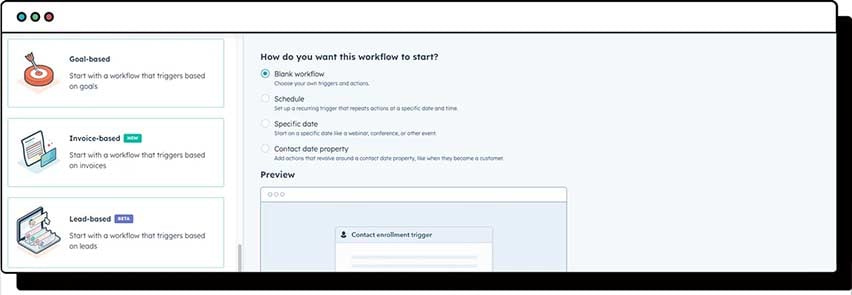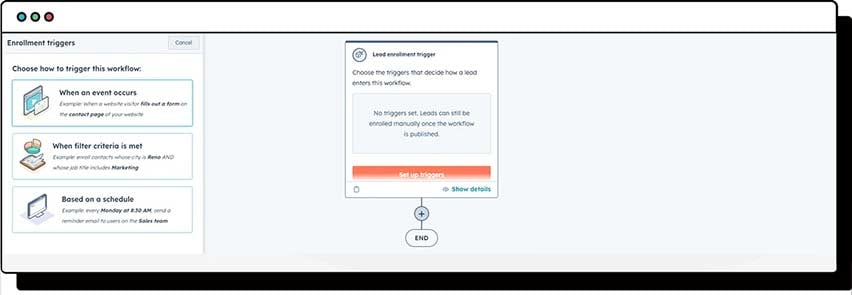The leads object is HubSpot's answer to the complexities of lead management. In the dynamic world of CRMs, the ability to manage and nurture leads effectively can make or break a business' sales strategy. Every interaction, every touchpoint, and every follow-up counts. But with the myriad of tools and features available, it can sometimes feel overwhelming to keep track of every prospect.
Enter HubSpot's latest innovation: the leads object.
This new feature promises to streamline the way we view and handle our active prospects, offering a more organised and efficient approach to lead management. If you've ever found yourself lost in a sea of contacts or wished for a simpler way to categorise and track your leads, then the leads object might just be the game changer you've been waiting for.
What is the leads object?
At its essence, the leads object is a dedicated space within the HubSpot CRM designed to give users a consolidated view of their active prospects. Gone are the days of sifting through endless lists or using makeshift tags to identify potential customers. With the leads object, every lead is clearly categorised and easily accessible.
But it's not just about organisation. The leads object is a dynamic tool that adapts to the needs of modern sales representatives. It allows for the categorisation of leads into distinct stages, from those freshly acquired to those on the brink of conversion. This means that at any given moment, you can gauge where a lead stands in the sales funnel, allowing for more tailored and effective outreach.
The leads object also integrates seamlessly with HubSpot's suite of automation tools. This means that based on specific actions or interactions, leads can automatically transition between stages, ensuring that no potential customer falls through the cracks.
In essence, the leads object is more than just a feature; it's a paradigm shift in how we approach lead management, making the process more intuitive, efficient, and results-driven.

Why the leads object matters
In the bustling realm of sales and marketing, the sheer volume of leads can be both a blessing and a curse. While having a plethora of potential customers is undoubtedly a boon, managing them effectively becomes the real test. This is where the leads object shines, addressing some of the most pressing challenges faced by sales professionals.
Firstly, clarity is paramount in sales. The leads object declutters the CRM environment. Instead of navigating a maze of contacts, notes, and tags, sales reps have a clear, organised view of their leads. This streamlined approach not only saves time but also reduces the risk of oversight, ensuring that every lead gets the attention it deserves.
Furthermore, the leads object introduces a structured approach to lead management. By categorising leads into distinct stages, it provides sales reps with a clear roadmap. No longer do they have to guess or rely on memory to determine the next step with a prospect. The leads object offers a visual representation of the sales journey, guiding reps on the best course of action for each lead.
But it's not just about visualisation. The automation capabilities of the leads object are transformative. In the fast-paced world of sales, timing is everything. The ability to automatically move leads through stages based on specific triggers ensures that opportunities are never missed. It's like having a virtual assistant that's always on top of things, ensuring that the sales process flows smoothly.
In a nutshell, the leads object matters because it addresses the core challenges of lead management head-on. It brings organisation, structure, and automation to the forefront, ensuring that sales reps can focus on what they do best: building relationships and closing deals.

Key features of the leads object
- Consolidated view: One of the standout features of the leads object is its ability to present all active prospects in a singular, unified space.

- Lead stages: The leads object introduces a systematic approach to categorising leads. From the initial 'new' stage to the more advanced 'qualified' phase, each lead can be placed on a clear trajectory. This not only helps in understanding their position in the sales funnel but also in tailoring outreach strategies accordingly.

- Automation capabilities: In today's fast-paced sales environment, automation is no longer a luxury - it's a necessity. The leads object seamlessly integrates with HubSpot's automation tools. Whether it's moving a lead to the 'attempting' stage after sending an email or transitioning them to 'connected' after a successful call, these automations ensure that the lead management process is both efficient and accurate.

These features, combined, make the leads object a formidable tool in the arsenal of any sales professional. By offering clarity, structure, automation, and foresight, it ensures that lead management is not just a task but a strategic endeavour.

Benefits of integrating the leads object into your CRM strategy
- Enhanced organisation: With the leads object, the days of sifting through a jumbled mix of contacts are over. Every lead has its designated space, ensuring that your CRM remains tidy and navigable. This clear structure not only simplifies the user experience but also speeds up the lead management process.
- Streamlined workflow: The leads object's automation features are a game-changer. By automating transitions between lead stages based on specific actions, it eliminates manual updates, reducing the chances of human error and ensuring that each lead progresses smoothly through the sales funnel.
- Tailored outreach: By categorising leads into distinct stages, sales reps gain a deeper understanding of each lead's position in the buying journey. This insight allows for more personalised and effective communication, increasing the chances of conversion.
- Improved efficiency: Task scheduling directly from the prospecting area means that follow-ups, calls, and emails are never missed. This proactive approach ensures that leads are consistently nurtured, maximising the potential for sales.
- Seamless integration: The beauty of the leads object lies in its ability to work harmoniously with other HubSpot features. Whether it's drawing insights from analytics, integrating with email campaigns, or linking to other CRM tools, the leads object acts as a cohesive part of the broader HubSpot ecosystem.
- Data-driven decisions: With a clear view of where each lead stands, sales reps and managers can make more informed decisions. Whether it's identifying bottlenecks in the sales process, understanding lead sources, or gauging the effectiveness of outreach strategies, the leads object provides valuable data that can drive sales strategy.
Incorporating the leads object into your CRM strategy is not just about adopting a new feature; it's about elevating your entire lead management approach. By offering clarity, automation, personalisation, and data-driven insights, it ensures that your CRM isn't just a tool but a strategic asset in your sales endeavours.

Conclusion
In the ever-evolving landscape of CRM, staying ahead means embracing tools that not only simplify tasks but elevate strategies. HubSpot's leads object is a testament to this ethos. It's not just a feature; it's a transformative approach to lead management. By offering a consolidated view, automation, tailored outreach, and seamless integration, the leads object ensures that lead management is both efficient and effective. For businesses and sales professionals aiming to optimise their CRM practices, integrating the leads object is a step towards clarity, precision, and success.
